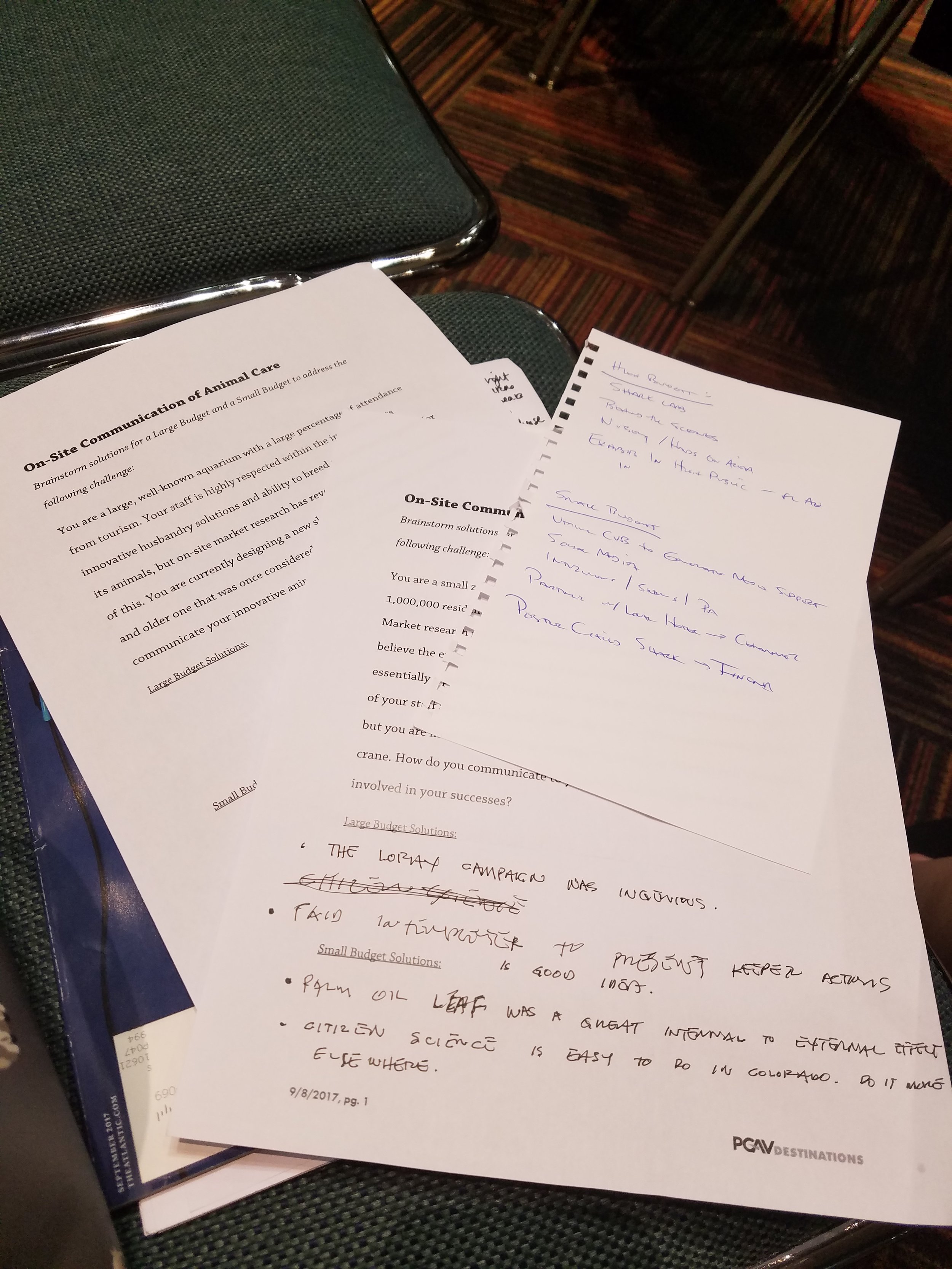On Monday, September 11, PGAV Destinations led a session highlighting market research that explored the question "how can we affect public perception of zoos and aquariums?" The session included brief presentations by 9 panelists, including Bob Cisneros from Big Bear Alpine Zoo, Mark Fisher from Cincinnati Zoo, John Walczak from Louisville Zoo, Bill Street from SeaWorld, Chris Schmitz from Utah's Hogle Zoo, Magdaline Southard from Monterey Bay Aquarium, Kimberley Lengel from Philadelphia Zoo, Kevin Mills from South Carolina Aquarium (presented by Emily Howard of PGAV), and Stacey Ludlum from PGAV. Individual presentations unfortunately ran 20 minutes longer than anticipated, and the majority of our session audience did not participate in the workshop. However, we did have two intrepid groups discuss their hypothetical issues. Those results are below.

Question One:
You are a large, well-known aquarium with a large percentage of attendance from tourism. Your staff is highly respected within the industry for its innovative husbandry solutions and ability to breed and sustain longevity for its animals, but on-site market research has revealed your guests are not aware of this. You are currently designing a new shark exhibit to replace your smaller and older one that was once considered the best of the best. How do you communicate your innovative animal care at the core of your mission?
High Budget:
- Shark Lab
- Behind the Scenes views and tours
- Nursery and hands-on area
- Exhibit located in high public view
Low Budget:
- Utilize local CVB to generate media support
- Utilize social media to tell stories about poster child shark
- Partner with local news for interviews, regular media segments
Question Two:
You are a small zoo with steady, flat attendance in a medium-sized city (under 1,000,000 residents). Membership accounts for half of your attendance. Market research reveals that people in your community know of you, but believe the experience is meant for small children only and think of you as essentially a petting zoo. You have recently gained AZA accreditation, and all of your staff are highly skilled. Your collection includes many native species, but you are most proud of your successes in breeding cheetah and whooping crane. How do you communicate to your visitors the high level of care involved in your successes?
High Budget:
- Hire more staff to be interpreters on-site
- Engage in an interactive interpretive campaign that highlights the cheetah or whooping crane
- Adult oriented night event that celebrates cheetahs or whooping cranes and the keeper staff related to those animals
Low Budget:
- Citizen science program tracking whooping cranes in nature
Check back for more information on this session including write-ups of the individual presentations!




















